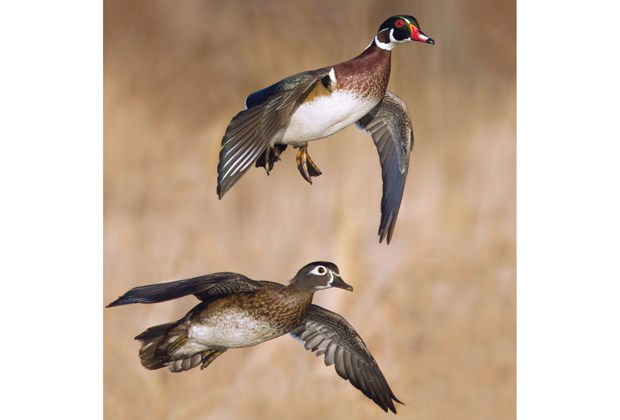Nature reveals glorious worlds of sounds and colours - beauty for which mere words are unable to describe.
And we need not travel to distant lands to find such amazing beauty, it's right here on the North Shore.
Recently, the Wild Bird Trust of British Columbia held its annual Dawn Chorus nature event at The Conservation Area at Maplewood Flats and simply put, it was wonderful. Most birds do much of their singing at sunup and so by 6 a.m., when we began counting, the chorus was well underway. Some of the first birds to greet the rising sun were the American robin with its familiar "cheerily, cheerily, cheer-up"; the black-capped chickadee with "tea-time"; and, the Swainson's thrush whose beautiful voice has been described as flute-like. Both the hermit thrush and the Swainson's thrush have hauntingly beautiful songs. The hermit thrush passes through areas like the conservation area, but to hear its song, you'll need to visit sub-alpine forests of local mountains (Mountain Hemlock Zone).
A few of the other birds noted at the Dawn Chorus included red-winged blackbird, black-headed grosbeak, western tanager, spotted towhee, song sparrow and warbling vireo. Some, like the tanager, grosbeak and vireo, were voices not heard since last year. They are species that spend their winters in Southern climes - i.e. neotropical migrants.
Different habitats feature different mixes of bird species, whether it's forest, pond, meadow, seashore or stream. That's why it's important to visit as many habitats as possible to get a good list.
The question quickly arises: Why do birds do much of their singing in the early morning? Why not noon? It should be pointed out that there is also an evening chorus but it doesn't compare to the intensity of the morning chorus. It's nice to think that birds sing to greet a new day, but they have more practical reasons. It all has to do with breeding, establishing territory and attracting a mate. Morning is a good time to sing because the air is cool and still. Birds also make a variety of calls that serve different purposes from songs (contract calls, warn of danger, etc.). For example, the black-capped chickadee is a name sayer. "Chick-a dee" is one of its calls, but its song is "teatime" or "fee-bee."
Some birds make non-vocal sounds such as the drumming of woodpeckers and winnowing of snipe, nighthawks and hummingbirds. More than a few folks have heard a flicker tapping on their rooftop or corner street light cover.
June is such a wonderful month to be outdoors at Maplewood with colourful wildflowers, bees buzzing, dragonflies dashing about and butterflies dancing in the breezes. Rufous and Anna's are two commonly seen hummingbirds, but always check carefully around nectar plants like black twinberry (a honeysuckle) for the rare Calliope hummingbird. Cedar waxwings love to eat the berries of twinberry, so watch for them amongst the bushes as well.
Visitors to the conservation area have been thrilled recently to watch families of wood ducks and mallards. The rainbowcoloured wood duck is very colourful indeed. It is a cavity nesting species that takes well to nesting boxes made for it.
When scanning the mud (tidal) flats for purple martins (which were flying about) we also saw turkey vultures (regulars on the North Shore), bald eagles, great blue herons and ospreys.
A good spot at the conservation area to observe birds and other wildlife is Osprey Point. There is a bench you can sit on to listen and watch. It's very peaceful at Osprey Point, a favourite place of mine to enjoy nature. Along with birds, watch for butterflies, like the mourning cloak, western tiger swallowtail and Lorquin's Admiral. Deer, otters and seals - it's all wonderful and yours to enjoy. Keep safe.
Al Grass is a naturalist with the Wild Bird Trust of British Columbia, which offers free walks at The Conservation Area at Maplewood Flats on the second Saturday of every month. The next walk will be June 14 at 10 a.m. Participants will search and listen for the birds and other wildlife that call the conservation area their summer home. Meet at WBT's site office, 2645 Dollarton Hwy. Walks go rain or shine. On June 28, the annual Big Sit - Bird Watch Challenge starts at 8 a.m. Bring a chair, binoculars, and dress for the weather for this two-hour birding challenge. Meet at WBT's site office.



